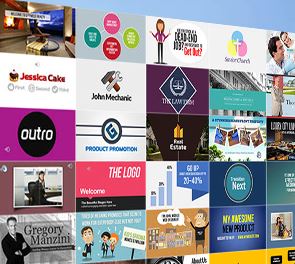Many video training courses start as classroom content that needs to be converted and put online. You have a bunch of PowerPoint slides that you want to turn into a Video based course.
 Typically, when you start to create a online course you will start from content that already exists in PowerPoint and often that content dictates how the course is structured and how it looks.
Typically, when you start to create a online course you will start from content that already exists in PowerPoint and often that content dictates how the course is structured and how it looks.
But that may not always be best way to do it.
Your content has been designed for a classroom. And it has some visual design that usually comes from a PowerPoint template with specific colors, schemes, and fonts. So, you’ll tend to allow the existing content to determine how you create the video course. What you should do is take a step back and ask yourself these questions.
- What would the course look like as a video?
- What content really needs to be in the course?
- What will the learner end up doing with this content?
These three questions help to drive your new course design that is more appropriate for video.
Here’s a typical scenario. You’re client hands you a PowerPoint file and some other documents or perhaps you have been teaching the course yourself for years in a successful classroom setting and now you want to convert it to a video training course.
Easy enough.
In this scenario, you typically open up the existing PowerPoint file and make decision on a slide-by-slide basis. You’ll start with the first slide, make some small adjustments, and then move on to slide 2. Make a few more adjustments, and then move on to the next slide.
The challenge with this approach is that you’re letting the existing classroom content and instructional structure drive how you build a video course. That may work on some occasions but for the most part it’s not ideal.
Even if the existing content looks right to you, don’t stop there. Take a step back and start with a blank screen. Then determine how the course needs to be built and what content you need.
Let’s revisit the three essential questions.
What Will the Video Training Course Look Like?
Most likely the look that isn’t right for the course is the one that comes from the existing content because you have probably used one of the existing PowerPoint templates that just doesn’t work for video. If you choose to use a PowerPoint template at all there templates that are much more appropriate for video than the one’s that come with PowerPoint. You might take a look at this site for some ideas…http://www.superpowerppt.com/
What Content Needs to be in the Training Course?
When you are the expert on your content you tend to think everything’s important. And it probably is in the proper context. But “important” content is not the same as the “right” content that is appropriate to the goals of the video training.
Not all of the information about a given topic needs to be in a course. Instead ask yourself, “At the end of the course, what change should I expect from the learner? What does it look like if I see it?” Then build the course so the learner can practice and demonstrate that desired change.
What Will the Learner Do with this Content?
This question builds off of the second one. The content in the course is structured to meet specific objectives. As the learner goes through the course, what is she supposed to do? This question helps focus on the interactive component of the course.
Do you want her reading and reflecting on content? Is there a place for her to do something, to make some decisions? Once she’s exposed to the course content, what is she supposed to do?
Sometimes the course content is simple refresher material and doesn’t require a lot if interactivity. But often the content is new and is tied to some sort of performance expectation. What can you do to get the learner to practice using the information in a setting similar to what they’d do in the real world?
There are many things to think about when converting classroom lectures to video but the three essential questions above are a great start.
If you can answer those questions you’re on your way to building effective video training courses.

